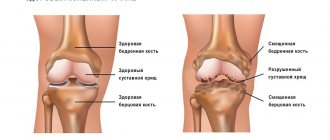Septic shock is a systemic pathological response to severe infection. It is characterized by fever, tachycardia, tachypnea, and leukocytosis when identifying the source of primary infection. In this case, microbiological blood testing often reveals bacteremia. In some patients with sepsis syndrome, bacteremia is not detected. When arterial hypotension and multiple systemic failure become components of the sepsis syndrome, the development of septic shock is stated.
Causes and pathogenesis of the development of septic shock:
The incidence of sepsis and septic shock has been steadily increasing since the 1930s and is likely to continue to increase. The reasons for this are:
1. Increasing use of invasive devices for intensive care, that is, intravascular catheters, etc.
2. Widespread use of cytotoxic and immunosuppressive drugs (for malignant diseases and transplantations), which cause acquired immunodeficiency.
3. Increase in life expectancy of patients with diabetes mellitus and malignant tumors, who have a high level of predisposition to sepsis.
Bacterial infection is the most common cause of septic shock. In sepsis, the primary foci of infection are often localized in the lungs, abdominal organs, peritoneum, and also in the urinary tract. Bacteremia is detected in 40-60% of patients in a state of septic shock. In 10-30% of patients in a state of septic shock, it is impossible to isolate the culture of bacteria whose action causes septic shock. It can be assumed that septic shock without bacteremia is the result of a pathological immune reaction in response to stimulation by antigens of bacterial origin. Apparently, this reaction persists after pathogenic bacteria are eliminated from the body by the action of antibiotics and other elements of therapy, that is, its endogenization occurs. The endogenization of sepsis may be based on numerous, mutually reinforcing and realized through the release and action of cytokines, interactions of cells and molecules of innate immune systems and, accordingly, immunocompetent cells.
Sepsis, systemic inflammatory response, and septic shock are consequences of an excessive response to stimulation of cells that carry out innate immune responses by bacterial antigens. An excessive reaction of cells of the innate immune system and a secondary reaction of T-lymphocytes and B-cells cause hypercytokinemia. Hypercytokinemia is a pathological increase in the blood levels of agents of autoparacrine regulation of cells that carry out innate immune reactions and acquired immune reactions.
With hypercytokinemia in the blood serum, the content of primary proinflammatory cytokines, tumor necrosis factor-alpha and interleukin-1 increases abnormally. As a result of hypercytokinemia and systemic transformation of neutrophils, endothelial cells, mononuclear phagocytes and mast cells into cellular effectors of inflammation, an inflammatory process devoid of protective significance occurs in many organs and tissues. Inflammation is accompanied by alteration of the structural and functional elements of effector organs.
A critical deficiency of effectors causes multiple systemic failure.
First aid for hypovolemic shock
Hypovolemic shock is a pathological condition that occurs as a result of a rapid decrease in the volume of blood circulating in the body.
Causes of hypovolemic shock:
- acute blood loss;
- burn disease;
- dehydration (uncontrollable vomiting, profuse diarrhea);
- gestosis;
- polyuria;
- endocrine disorders;
- uncontrolled use of certain medications.
In the development of hypovolemic shock, three phases are distinguished: BCC deficiency (circulating blood volume), stimulation of the sympathoadrenal system, shock.
Symptoms and signs of septic shock:
The development of a systemic inflammatory response is indicated by the presence of two or more of the following signs:
• Body temperature is higher than 38oC, or below 36oC.
• Respiratory rate greater than 20/minute. Respiratory alkalosis with carbon dioxide tension in arterial blood below 32 mmHg. Art.
• Tachycardia with a heart rate greater than 90/minute.
• Neutrophilia when the content of polymorphonuclear leukocytes in the blood increases to a level above 12x109/l, or neutropenia when the content of neutrophils in the blood is below 4x109/l.
• A shift in the leukocyte formula, in which band neutrophils make up more than 10% of the total number of polymorphonuclear leukocytes.
Sepsis is indicated by two or more signs of a systemic inflammatory reaction when the presence of pathogenic microorganisms in the internal environment is confirmed by bacteriological and other studies.
Symptoms
Symptoms of shock:
- decreased blood pressure (may be completely absent);
- increased heart rate or, conversely, the pulse may become “soft”, weak and “thread-like”;
- increased breathing;
- severe weakness;
- pale skin;
- the skin may become pale bluish or pale yellow;
- lack of urine;
- lack of response to pain;
- loss of consciousness.
This condition does not always end in death. Shock can develop within a couple of minutes or hours. The sooner this condition is diagnosed, the greater the chance of saving a person’s life.
Course of septic shock
In septic shock, hypercytokinemia increases the activity of nitric oxide synthetase in endothelial and other cells. As a result, the resistance of resistive vessels and venules decreases. A decrease in the tone of these microvessels reduces overall peripheral vascular resistance. During septic shock, some of the body's cells suffer from ischemia caused by peripheral circulatory disorders. Peripheral circulation disorders in sepsis and septic shock are consequences of systemic activation of endothelial cells, polymorphonuclear neutrophils and mononuclear phagocytes.
Inflammation of this origin is purely pathological in nature and occurs in all organs and tissues. A critical drop in the number of structural and functional elements of most effector organs is the main link in the pathogenesis of the so-called multiple system failure.
According to traditional and correct ideas, sepsis and a systemic inflammatory response are caused by the pathogenic action of gram-negative microorganisms.
In the occurrence of a systemic pathological reaction to invasion into the internal environment and blood of gram-negative microorganisms, the decisive role is played by:
• Endotoxin (lipid A, lipopolysaccharide, LPS). This heat-stable lipopolysaccharide forms the outer coating of gram-negative bacteria. Endotoxin, acting on neutrophils, causes the release of endogenous pyrogens by polymorphonuclear leukocytes.
• LPS-binding protein (LPBP), traces of which are determined in plasma under physiological conditions. This protein forms a molecular complex with endotoxin that circulates in the blood.
• Cell surface receptor of mononuclear phagocytes and endothelial cells. Its specific element is a molecular complex consisting of LPS and LPSSB (LPS-LPSSB).
Currently, the frequency of sepsis caused by invasion of gram-positive bacteria into the internal environment is increasing. The induction of sepsis by Gram-positive bacteria is usually not associated with their release of endotoxin. Peptidoglycan precursors and other wall components of Gram-positive bacteria are known to trigger the release of tumor necrosis factor-alpha and interleukin-1 by immune cells. Peptidoglycan and other components of the walls of gram-positive bacteria activate the complement system through the alternative pathway. Activation of the complement system at the whole body level causes systemic pathogenic inflammation and contributes to endotoxicosis in sepsis and the systemic inflammatory response.
It was previously thought that septic shock was always caused by endotoxin (a lipopolysaccharide of bacterial origin) released by gram-negative bacteria. It is now generally accepted that less than 50% of cases of septic shock are caused by Gram-positive pathogens.
Disorders of peripheral circulation during septic shock, adhesion of activated polymorphonuclear leukocytes to activated endothelial cells - all this leads to the release of neutrophils into the interstitium and inflammatory alteration of cells and tissues. At the same time, endotoxin, tumor necrosis factor-alpha, and interleukin-1 increase the formation and release of tissue coagulation factor by endothelial cells. As a result, mechanisms of external hemostasis are activated, which causes fibrin deposition and disseminated intravascular coagulation.
Arterial hypotension in septic shock is mainly a consequence of a decrease in total peripheral vascular resistance. Hypercytokinemia and an increase in the concentration of nitric oxide in the blood during septic shock causes dilatation of arterioles. At the same time, through tachycardia, the minute volume of blood circulation increases compensatoryly. Arterial hypotension in septic shock occurs despite a compensatory increase in cardiac output. Total pulmonary vascular resistance increases during septic shock, which can be partly attributed to the adhesion of activated neutrophils to activated endothelial cells of the pulmonary microvessels.
The following main links in the pathogenesis of peripheral circulatory disorders in septic shock are distinguished:
1) increased permeability of the microvascular wall;
2) an increase in microvascular resistance, which is enhanced by cell adhesion in their lumen;
3) low response of microvessels to vasodilating influences;
4) arteriolo-venular shunting;
5) drop in blood fluidity.
Hypovolemia is one of the factors of arterial hypotension in septic shock.
The following causes of hypovolemia (a drop in cardiac preload) in patients in a state of septic shock are identified:
1) dilatation of capacitive vessels;
2) loss of the liquid part of the blood plasma in the interstitium due to a pathological increase in capillary permeability.
It can be assumed that in most patients in a state of septic shock, the drop in oxygen consumption by the body is mainly due to primary disorders of tissue respiration. In septic shock, moderate lactic acidosis develops with normal oxygen tension in the mixed venous blood.
Lactic acidosis in septic shock is considered to be a consequence of decreased pyruvate dehydrogenase activity and secondary accumulation of lactate, rather than a decrease in blood flow in the periphery.
Peripheral circulatory disorders in sepsis are systemic in nature and develop with arterial normotension, which is supported by an increase in minute volume of blood circulation. Systemic microcirculation disorders manifest themselves as a decrease in pH in the gastric mucosa and a decrease in oxygen saturation of blood hemoglobin in the hepatic veins. Hypoergosis of intestinal barrier cells, the action of immunosuppressive links in the pathogenesis of septic shock - all this reduces the protective potential of the intestinal wall, which is another cause of endotoxemia in septic shock.
Meningococcal infection
Meningococcemia is one of the forms of generalized meningococcal infection, characterized by an acute onset with a rise in body temperature to febrile levels, general intoxication, hemorrhagic skin rashes, and the development of infectious-toxic shock.
Clinical manifestations of meningococcal infection:
- Often acute onset or sharp deterioration due to nasopharyngitis.
- High, persistent fever with signs of impaired peripheral circulation. Early signs of fulminant toxic progression of meningococcal infection may be a “two-humped” nature of the temperature curve - the first increase in body temperature to 38.5ºC is reduced with the help of antipyretics, the second (after 9-18 hours) - to 39.5-40ºC without the effect of antipyretics.
- Hemorrhagic rash that appears a few hours or 1-2 days after the onset of fever. The typical localization of the rash is the outer surface of the thighs and legs, buttocks, feet, hands, and lower abdomen. Often a hemorrhagic rash is preceded or combined with a polymorphic roseolous or roseolous papular rash with the same localization, less often on the face.
- General cerebral symptoms: intense headache, “cerebral vomiting”, possible disturbances of consciousness, delirium, hallucinations, psychomotor agitation, convulsions.
- Meningeal syndrome. It usually appears later, against the background of advanced symptoms of meningococcemia.
Threatening syndromes in generalized forms of meningococcal infection are:
- infectious-toxic shock develops during the hyperacute course of meningococcemia. As a rule, symptoms of shock occur simultaneously or after the appearance of a hemorrhagic rash. However, ITS can occur without a rash, so all children with infectious toxicosis should have their blood pressure measured;
- cerebral edema with brainstem dislocation. It manifests itself as impaired consciousness, hyperthermia, severe meningeal symptoms (sometimes their absence in the terminal stage of the disease), convulsive syndrome and unusual changes in hemodynamics in the form of relative bradycardia and a tendency to increase blood pressure. In the terminal stage of cerebral edema there is absolute bradycardia and respiratory arrhythmia.
Urgent Care:
- Ensure patency of the upper respiratory tract, oxygen therapy.
- Administer chloramphenicol (chloramphenicol succinate) at a dose of 25-30 mg/kg intramuscularly.
- Intravenous (if not possible, intramuscular) administration of glucocorticoids in terms of prednisolone 5-10 mg/kg or dexamethasone 0.6-0.7 mg/kg body weight; if there is no effect and it is impossible to transport the patient, it is necessary to re-introduce hormones in the same doses (for ITS stage III, the dose of corticosteroids can be increased 2-5 times).
- Introduce a 50% solution of metamizole (analgin) 0.1 ml/year of life intramuscularly + 1% solution of diphenhydramine (diphenhydramine) at a dose of 0.1-0.15 ml per year of life intramuscularly (or 2% solution Suprastin solution – 2 mg/kg intramuscularly) + 2% papaverine solution 0.1 ml/year of life).
- For agitation, convulsive syndrome - 0.5% diazepam solution in a single dose of 0.1 ml/kg body weight (no more than 2 ml per administration) intravenously or intramuscularly, for intractable convulsions again in the same dose .
- In case of severe meningeal syndrome - intramuscular administration of a 1% furosemide solution at the rate of 1-2 mg/kg intramuscularly or 25% magnesium sulfate solution 1.0 ml/year of life intramuscularly.
Call the resuscitation team for yourself!!! Hospitalization in the intensive care unit of the nearest hospital. If meningococcal infection is suspected, hospitalization is indicated .
Intestinal toxicosis with exicosis is a pathological condition that is a complication of acute intestinal infections (AI) due to exposure to toxic products and significant fluid losses on the body, which leads to disruption of hemodynamics, water-electrolyte metabolism, acid-base reserve, and the development of secondary endogenous intoxication.
In the pathogenesis of toxicosis with exicosis, the leading role is played by dehydration, which leads to a deficiency in the volume of extra- (and in severe cases, intra-) cellular fluid and the volume of circulating blood. The degree of exicosis (dehydration) determines the choice of therapeutic tactics and affects the prognosis.
Severity of dehydration
| Signs | Degrees of dehydration | |||
| I degree | II degree* | III degree | ||
| Underweight | Up to 5% | 6-9 % | More than 10% | |
| BCC deficiency | More than 10% | 11-20 % | More than 20% | |
| General state | good | Excitation | Lethargic, lethargic, unconscious | |
| Chair | Infrequent (4-6 times a day) | Up to 10 times a day | Frequent (more than 10 times a day), watery | |
| Vomit | One-time | Repeated (3-4 times a day) | Multiple | |
| Thirst | Moderate | Sharply expressed | Refusal to drink | |
| Skin fold | Spreads out quickly | Unfolds slowly (≤2 sec) | Unfolds very slowly (>2 sec) | |
| Mucous membranes | Moist or slightly dry | Dry | Very dry, bright | |
| Cyanosis | ||||
| Eyeballs | Without features | Soft | They're sinking | |
| Voice | Without features | Weakened | Aphonia | |
| Heart sounds | Loud | Slightly muted | Deaf | |
| Heart rate | Norm | Moderate tachycardia | Severe tachycardia | |
| Diuresis | Saved | Reduced | Significantly reduced | |
| Blood plasma electrolytes | Norm | Hypokalemia | Hypokalemia | |
| CBS | Norm | Compensated acidosis | Decompensated acidosis | |
| Rehydration method | Oral | Parenteral | ||
- II degree of exicosis is divided into IIA and IIB (with loss of body weight 6-7% and 8-9%, respectively).
Measures for dehydration
When starting to rehydrate children with exicosis, it is necessary to determine which route (orally and/or parenterally) and what volume of fluid should be administered to the child, at what speed to administer, and what solutions to use. Oral rehydration is carried out for exicosis of I, IIA degrees, parenteral - for exicosis of IIB and III degrees.
Outpatient treatment is possible (in the absence of other contraindications, see below) for grade I exicosis with oral rehydration.
Oral rehydration therapy
Indications: exicosis I, IIA degrees.
- The necessary solutions are glucose-salt (rehydron, oralit, gastrolit, glucosalan). In children under 3 years of age, it is advisable to combine glucose-saline solutions with salt-free solutions (tea, water, rice water, etc.) in a ratio of 1:1 - for severe watery diarrhea, 2:1 - for loss of fluid mainly through vomiting, 1: 2 – with loss of fluid with perspiration. The administration of saline and salt-free solutions alternates.
The amount of liquid for each hour of administration is divided into ½ teaspoon - 1 tablespoon (depending on age) every 5-10 minutes. If there is vomiting, rehydration does not stop, but is interrupted for 5-10 minutes and then continues again.
Features of the introduction of solutions at the 1st stage (the first 6 hours from the start of treatment):
- for grade I dehydration: 50 ml/kg for 6 hours. + 10 ml/kg b.w. after each loose stool or vomiting;
- for degree IIA dehydration: 80 ml/kg for 6 hours + 10 ml/kg b.w. after each loose stool or vomiting.
At the 2nd stage, maintenance therapy is carried out in the amount of ongoing fluid losses administered at this stage (80-100 ml/kg per day until the loss stops).
Diagnosis of septic shock
- Septic shock - sepsis (systemic inflammatory reaction syndrome plus bacteremia) in combination with a decrease in blood pressure. less than 90 mm Hg. Art. in the absence of visible reasons for arterial hypotension (dehydration, bleeding). Presence of signs of tissue hypoperfusion despite infusion therapy. Perfusion disorders include acidosis, oliguria, and acute disturbances of consciousness. In patients receiving inotropic agents, perfusion abnormalities may persist in the absence of arterial hypotension.
- Refractory septic shock is septic shock lasting more than one hour and refractory to fluid resuscitation.
Treatment of the pathological condition
In case of painful shock, a person is first given painkillers analgesics, for example, Promedol or Tramadol. Also in this case, injections of Diphenhydramine and Analgin are given in a 1:2 ratio or Ketanov is administered. It is important to know that analgesic drugs are not allowed to be used in case of low blood pressure, as well as traumatic brain injury.
The patient is also prescribed cardiovascular drugs that effectively increase blood pressure.
If the victim has bleeding, it must be eliminated. To do this, the blood vessel is clamped using a tourniquet. First aid also includes applying splints for wounds, fractures and soft tissue damage.
Depending on where the patient’s injury is, he must be positioned correctly, adhering to the rules of first aid.
To eliminate pain shock, the patient is infused with plasma or Polyglucin, and a novocaine blockade is performed.
The patient can be evacuated only after the symptoms of shock have resolved.
Diagnostics and tests
In the clinical diagnosis of pain shock, there are two stages - preliminary and final. At the first stage, publicly available clinical tests are used, at the second stage the diagnosis is established taking into account the obtained laboratory data and special techniques.
The doctor takes into account the behavior and mental state of the victim, as well as symptoms such as the color of the skin, mucous membrane, subungual beds, and the degree of filling of the saphenous veins. The nature and frequency of the pulse are also taken into account, blood pressure levels and body temperature are measured. You can determine that visible symptoms are a sign of painful shock by pressing your finger on the bloodless skin of the forehead.
When diagnosing pain shock, it is necessary to take into account the specifics of different types of injuries: for example, with chest injuries and severe wounds, the victim experiences fear of death, psychomotor agitation and muscle hypertonicity. With intra-abdominal injuries, symptoms of an acute abdomen are observed.
The final diagnosis can be confirmed using laboratory and special techniques. Studies of CBS, plasma electrolytes, erythrocytes and urine, osmometry, and ECG can provide information about the depth of the disorders.










